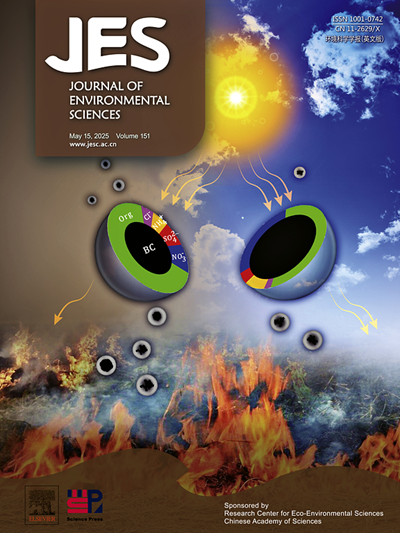A gene island from plasmid pkk5 of Burkholderia sp. KK1 confers arsenic resistance to Caballeronia jiangsuensis
IF 5.9
2区 环境科学与生态学
Q1 ENVIRONMENTAL SCIENCES
引用次数: 0
Abstract
Microorganisms play a critical role in the biotransformation of arsenic and the form which it exists in the environment. In this study, a methyl parathion-degrading bacterium Caballeronia jiangsuensis, isolated from an abandoned pesticide manufacturing plant, was used to analyze arsenic accumulation and transformation. The accumulation of trivalent organoarsenic compounds in C. jiangsuensis occurred to a greater extent than that of their pentavalent counterparts. The chromosome of C. jiangsuensis contains an arsenic gene island whose GC content is significantly lower than that of the genome, suggesting that the island was acquired via horizontal gene transfer. There was approximately 90 %-99 % similarity between the proteins encoded by the gene island and the corresponding sequence of the plasmid pkk5 from Burkholderia sp. KK1. The biotransformation of different arsenic species by C. jiangsuensis was subsequently analyzed. The results revealed that monomethylarsenic acid (MAs(V)) was rapidly demethylated to arsenate with very small amounts of intermediate monomethylarsonous acid (MAs(III)), whereas MAs(III) was largely oxidized to MAs(V) despite the occurrence of the gene arsI probably responsible for aerobic demethylation of MAs(III) in C. jiangsuensis. In addition, dimethylarsenic acid was partly demethylated to arsenate. Horizontal gene transfer of ars operon from a plasmid to other bacteria represents an adaptation to a specific environment. This study provides a new perspective for understanding arsenic biogeochemical cycling.

求助全文
约1分钟内获得全文
求助全文
来源期刊

Journal of Environmental Sciences-china
环境科学-环境科学
CiteScore
13.70
自引率
0.00%
发文量
6354
审稿时长
2.6 months
期刊介绍:
The Journal of Environmental Sciences is an international journal started in 1989. The journal is devoted to publish original, peer-reviewed research papers on main aspects of environmental sciences, such as environmental chemistry, environmental biology, ecology, geosciences and environmental physics. Appropriate subjects include basic and applied research on atmospheric, terrestrial and aquatic environments, pollution control and abatement technology, conservation of natural resources, environmental health and toxicology. Announcements of international environmental science meetings and other recent information are also included.
 求助内容:
求助内容: 应助结果提醒方式:
应助结果提醒方式:


